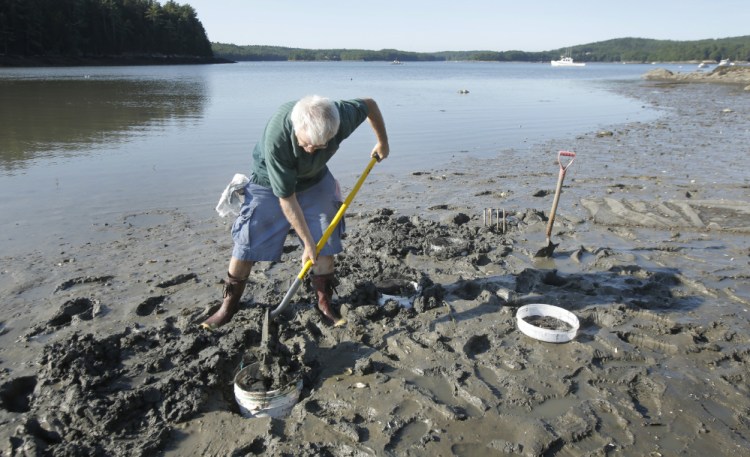In 2014, with rising ocean acidity threatening Maine’s fishing and aquaculture industries, a state commission issued a series of recommendations for localized research that was delivered with optimism.
“While scientific research on the effects of ocean acidification on marine ecosystems and individual organisms is still in its infancy,” the report said, “Maine’s coastal communities need not wait for a global solution to address a locally exacerbated problem that is compromising their marine environment.”
Three years later, little progress has been made on those recommendations, and the work of implementing them has been left to volunteers – hardly the response warranted by such a threat to Maine’s marine economy.
Contrast that with actions in Washington state, which commissioned its own blue-ribbon panel on acidification in 2012. Looking to protect its $270 million-a-year shellfish industry, Washington has since used $6 million in public money to fund research into ocean acidification, and is a founding member of a coalition working on the issue that includes four states, two Canadian provinces and nine national governments.
But not Maine, home of a shellfish industry with more than twice the value of Washington’s.
Here, efforts to put public resources toward monitoring and researching ocean acidification have come up short, and last year the commission was disbanded. The commission’s work has been taken up by a group of volunteers who now must find their own funding sources and get by without the significant power of the state behind them.
This isn’t something Maine should be doing on the cheap. Fueled by rising temperatures and increased runoff from coastal development, ocean acidity has increased 30 percent since the Industrial Revolution, and the ocean is expected to be two or three times more acidic than today by 2100.
The acidity makes it more difficult for mussels, oysters and clams to build shells, meaning fewer infants survive until adulthood – it has caused failures at oyster hatcheries and mussel farms, and some high-acidity flats in Maine are no longer producing clams.
“Make no mistake about it: What is at risk here is nothing short of the future of the aquaculture and fishing sectors of this state,” Sebastian Belle, executive director of the Maine Aquaculture Association, told state legislators in 2015.
The research on how acidity affects lobsters in cold water, however, is limited, an information gap that the largely forgotten report from the state commission was designed to close.
Without research conducted along the Maine coast, we won’t know how lobsters are responding to ocean acidity at different ages and in different areas. We won’t be able to identify areas of the state most affected by runoff and formulate ways to mitigate that impact. We won’t be able to move fishermen away from troubled spots, or properly prepare for major changes in an industry that defines communities up and down the coast.
The volunteer group is doing some of that work on their own, even traveling to an overseas conference on the subject. They are discussing joining the group founded by Washington state and others. Members say they have had cooperation from state agencies.
But with so much at stake, that’s simply not enough – as it stands now, Maine’s marine economy is heading into the next century blind.
Send questions/comments to the editors.



Comments are no longer available on this story